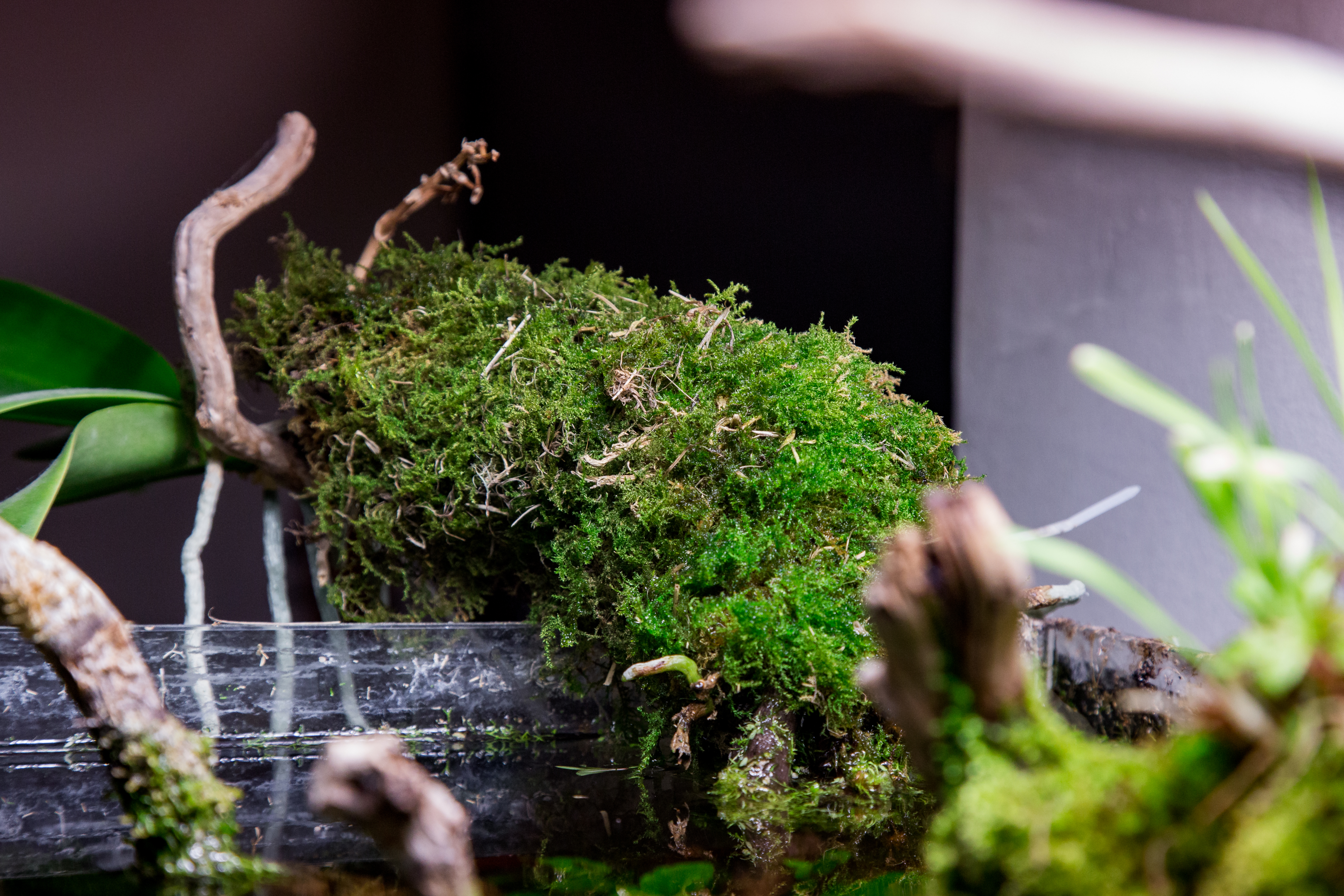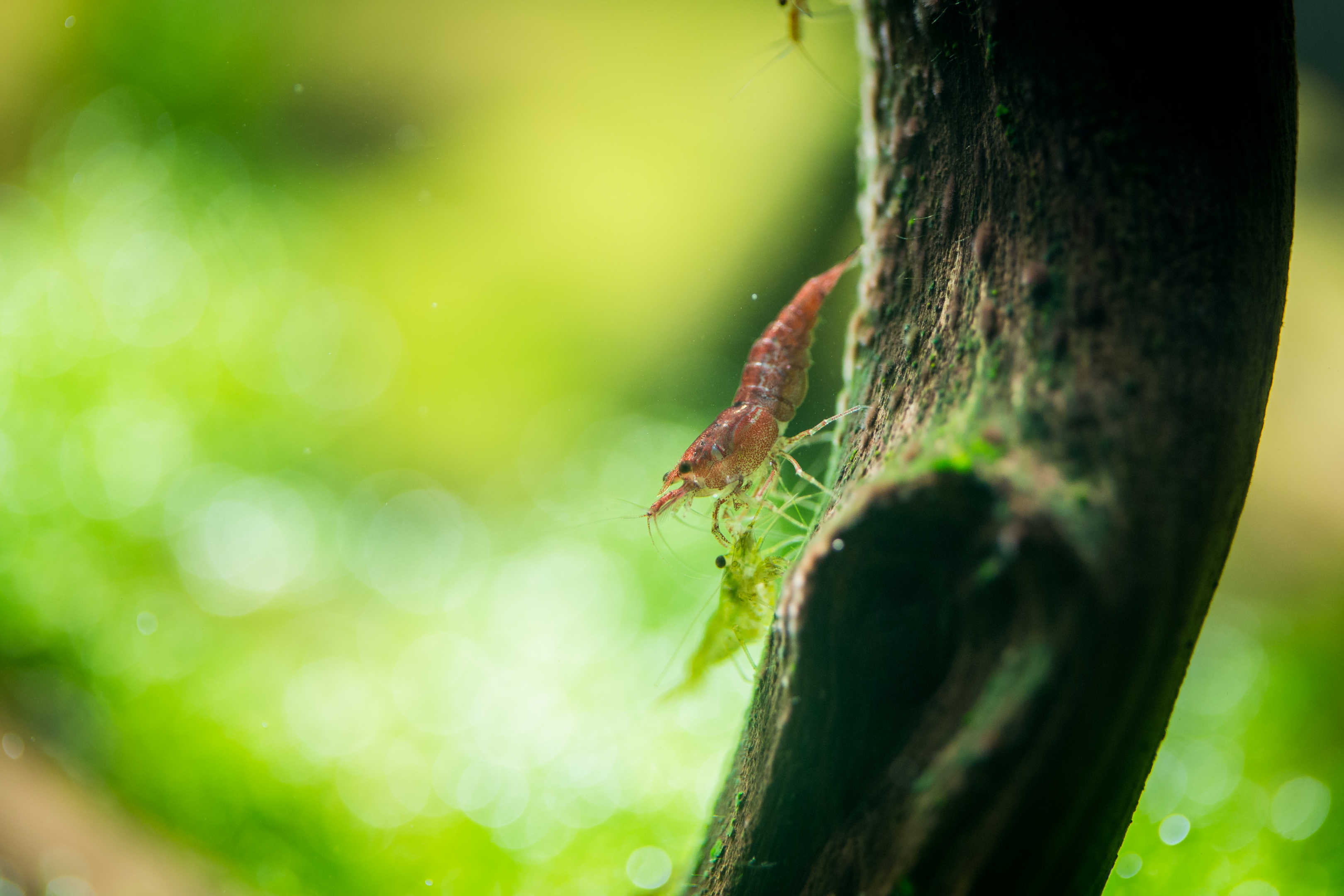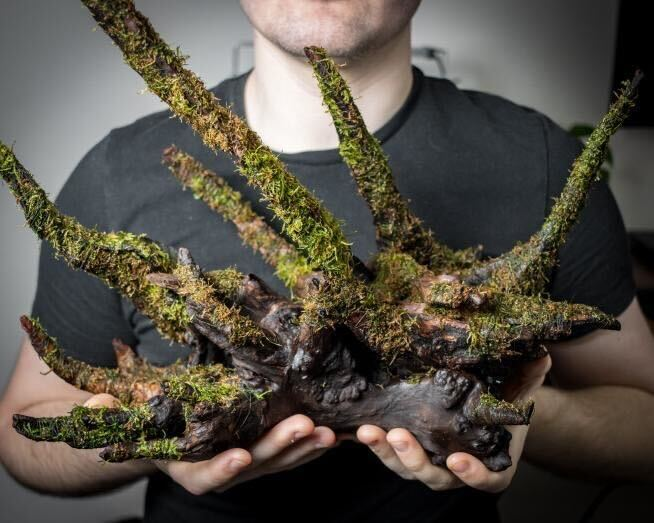Moss + aquarium- it's always a good match!
Moss + aquarium- it's always a good match!
Among so many aquatic plants available in aquarium trade, it's so hard to decide! There are stem plants, rozette plants, floating plant... and mosses! We are absolute fans of aquarium moss and the way they giving add a wild touch to aquariums. Look into our article and discover the different aquarium mosses that can be used in your planted fish tank and how to set up your very own 'mossarium'.

Why is aquarium moss liked by so many fish tank enthusiasts?
Let's see why the simple moss is used by so many aquascapers. What are the benefits?
Sheltering function
The aquarium is a closed environment, totally different from natural habitat of aquatic animals. However, this hobby is based on reflecting the nature. Providing animals with aquarium moss formations, or even an entire moss wall in the tank, will give them shelter and for some species- place to spawn. It's beautiful foliage and self attaching ability means it doesn't take long for most types of moss to spread along the rough surface of wood or stone.

Aesthetic reasons
Aquatic mosses, even common species look great. They make the perfect decoration for a piece of driftwood in a planted aquarium. Whether the bright green colour or occasional deep green colour is on show, most types of moss bring peace to the aquarium, making it a pleasant space to hang out for shrimp. Even the outside of the aquarium, looking in provides a relaxing experience.
Ease of changing the arrangement
An aquarium arrangement based on different moss species is something that can be made endlessly. If you get bored with it after a while, it's extremely easy to disassemble and rescape it with additional moss, new rocks or stones and a variety of substrates. Aquarium mosses are easy to work with when attached to rock or wood which makes them damageable for most people with an interest in natural aquariums.
Support of the filtration system
Aquatic plants support the filtration in a fish tank system by absorbing nitrogen compounds present in the fish waste during photosynthesis. Moss does this too which helps maintain a healthy range of water parameters.
What species are easy to grow in the aquarium?
Like other aquatic plants, some mosses will happily grow with little support, low lighting and overall low demands, while others require more specific needs to grow densely and produce fluffier leaves. Below is a list of mosses we believe anyone can grow with just a little bit of attention to their needs.
Christmas moss
A very effective moss with a triangular form resembling a Christmas tree (hence its name). With low demands, it is easy to maintain and care for, and with regular fertilization and adequate lighting, it grows quickly and efficiently. It can grow without CO2 injection, however this surely helps for its rapid development. This tree shape moss is popular with shrimps.
Willow moss
Vesicularia ferriei comes from South America. Its color and shape resemble a weeping willow, hence its name. This moss species needs medium light intensity, carbon dioxide, nutrients and regular trimming of its branches.
China moss
It's quite a new species that is gaining popularity due to its minimalist style and character. Its appearance resembles small mounds delicately covered with leaves. These are small, and thus - they are easy to care for. It is undoubtedly a good choice for beginners but be aware that bottom dwelling fish or shrimp are unlikely to find shelter in it.
Taiwan moss
A very decorative moss that in low light is very similar to Java moss. However, under optimal conditions, it can be easily distinguished by the triangular shape of the twigs. Moss branches are almost at right angles and usually grows horizontally. Taiwan moss quickly acclimates and does not require experience from the aquarist because it is one of the easiest aquatic mosses. Taiwan moss is perfect for planting various types of aquarium decorations.
How to set up a mossarium?
Of course moss, substrate and hardscape are not the only elements of the mossarium. Let's list the essentials.
Tank
It's quite obvious, however worth mentioning. The tank size does not matter here unless you want to add the livestock.
Light, filtering system and heater
No aquarium can work properly without this equipment.
Filters
Again- quite obvious but no aquarium can be healthy without an efficient filtration system. This is surely important when it comes to moss trimming as the tiny pieces of greenery will float in the water column.
Light
Lighting should be adjusted according to the tank depth and surface, also depending if you're fertilizing with CO2 or not. Regular day and night cycle is essential for proper functioning of the whole ecosystem. Research your chosen mosses and make sure your light can provide the desired environment effectively.
Heater
Same as aquatic animals, aquarium mosses are effected by water temperature.Some species prefer higher temperatures while others thrive in moderately cool water temperatures. Providing the wrong climate can effect the growth rate. Therefore, a reliable heater is a must-have of the equipment.
Wood, stones and roots
These are the base for the moss growing in your aquarium. These elements provide the surface which is going to be covered with moss. They can be dried out and you can grow the moss on it before putting the hardscape into the tank. This solution will allow you to see what works best before placing it in the aquarium, where it can be difficult to make small changes. Once you are happy with the placement of everything, simply recreate it inside your aquarium.

Fishing line
This tool will be helpful when it comes to planting moss on rocks and stones. After some time the moss will stick to the hardscape itself. An alternative to fishing line would be black thread which is also just as effective.
Blender and yoghurt!
Yes, exactly! This method is perfect when we want to start growing moss outside the aquarium first. All you need to do is to blend natural yoghurt with moss and spread the mixture with a brush on the root. Some patience and the moss will take over the hardscape.
A similar technique to blending moss with yogurt is to apply it to the surface using everyday super glue. Just be careful not to stick your fingers to your aquarium.
Let's start step by step
Step 1
Start with the hardscape. Depending on the method of growing moss you chose (outside or inside the tank), place the stones, rocks and roots skeleton inside the tank according to your imagination. If it's not covered with moss yet, simply attach it to the hardscape with a fishing line or super glue direct to the surface.
Step 2
Add the substrate. This can be sand or gravel, depending what other plants you want to have in your tank.
Step 3
Sprinkle the substrate with a sprinkler and pour water over the tank. Of course, don't forget to connect all the equipment.
Step 4
Be patient. Most species of moss usually grow slowly. You will see first changes in the moss size in 3-4 weeks after planting. Real effects will be visible after 6weeks to even 2 months- everything depends on the water conditions, lighting, nutrients and carbon dioxide supplementation. Patience is the key.
Summary
Aquatic mosses are fantastic plants for almost every setup. That's why so many aquascapers decide on having them in their arrangement, mixing different species or even having them as a carpet. The uncountable possibilities of growing aquarium moss encourage more and more people to set up a mossarium, and the arrangements are simply phenomenal. For beginners we recommend to grow an aquarium moss adapting to most water conditions. Successful growth is more likely then :)



